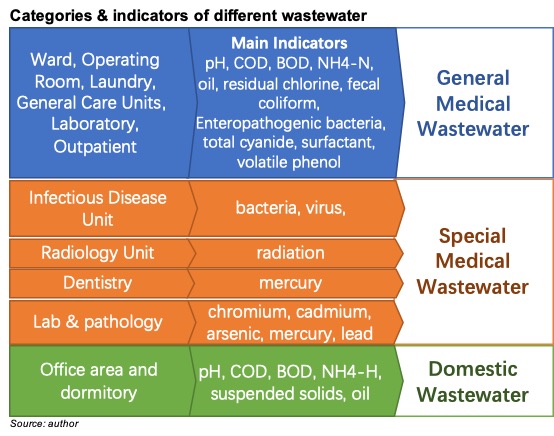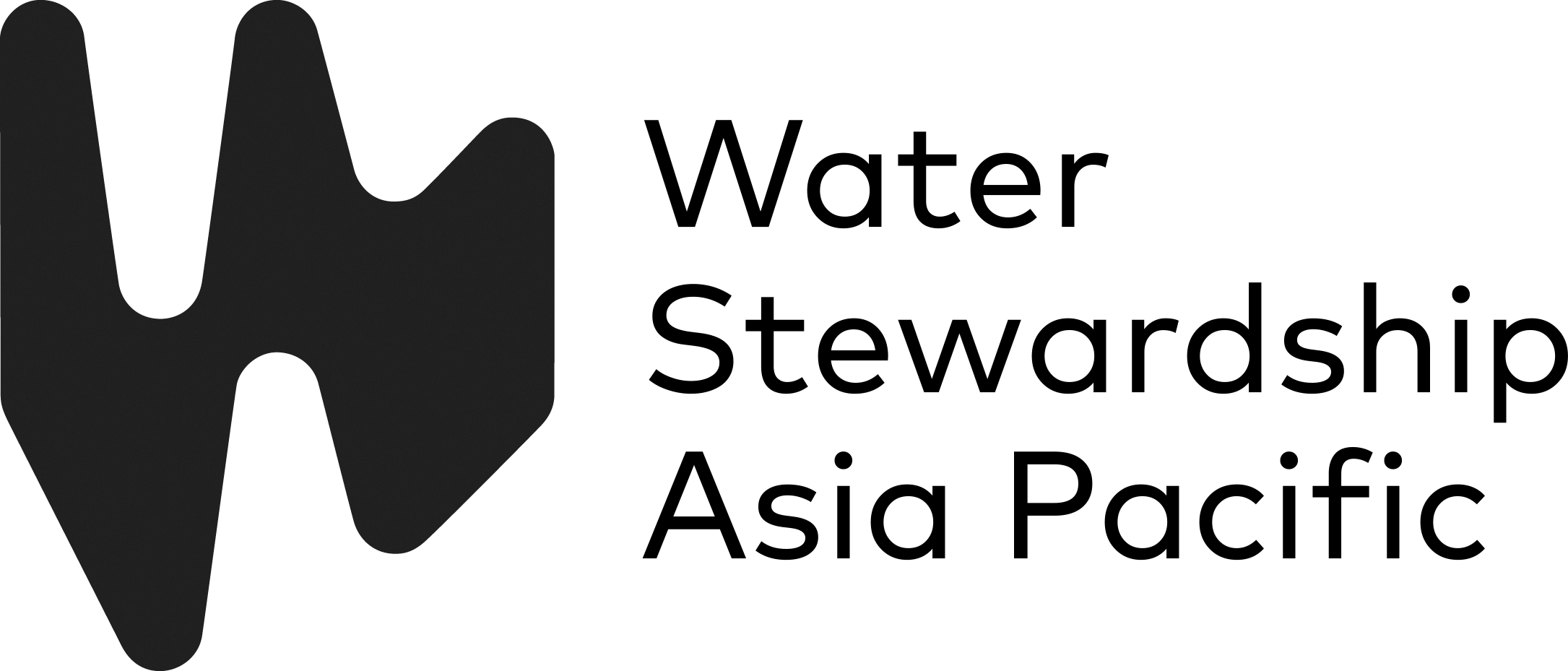The original version of this article was published on China Water Risk.
Coronavirus can be found in faeces/urine so medical wastewater must be treated properly. Zhenzhen Xu expands on China’s efforts in Wuhan & beyond.
- Given COVID-19 can be transmitted through human waste, the treatment of medical wastewater is highly important; in China the MEE has already issued two standards for all hospitals to follow
- While these are more tricky for temporary quarantine venues to follow, the MEE reports that all sewage treatment facilities are meeting the discharge standards & issues found have been rectified
- Although the usage of disinfectant still requires more research & guidance, it’s a good start as there has never been such large-scale & detailed inspections on hospitals by the Chinese government before
Since the outbreak of COVID-19, the problem of medical waste and wastewater disposal has caused widespread public concern. On March 3, The National Health Commission & State Administration of Traditional Chinese Medicine announced the Diagnosis and Treatment Protocol for Novel Coronavirus Pneumonia (Trial Version 7), adding in the transmission route “As the novel coronavirus can be isolated in faeces and urine, attention should be paid to faeces or urine contaminated environment that may lead to aerosol or contact transmission”.
The possibility of faecal-oral transmission of the virus is officially included in the diagnosis and treatment plan. Compared with solid waste such as masks and protective clothing, the flow and disposal of medical wastewater are more hidden.
The scale of medical wastewater
Like everything else about this outbreak, the problems are defined by the magnitude. With total infected cases skyrocketing, not only infectious disease hospitals are filled with patients, but many general hospitals are also requisitioned. In Wuhan City, the government built two specialised hospitals – Leishenshan and Huoshenshan, and converted 16 existing venues into temporary hospitals during the worst period of the pandemic.
According to the Ministry of Ecology and Environment (MEE), there are in total 2,617 designated hospitals and 5,278 centralised quarantine facilities in China. To treat and disinfect their medical wastewater properly before releasing into the environment, there are in total 2,076 urban sewage treatment plants.
What is a proper treatment and related issues?
On February 1 and 16, MEE issued two consecutive notices urging all level of government to strengthen supervision and stop COVID-19 from spreading through sewage.
- Notice on Stepping up in the Supervision of Medical Wastewater and Urban Sewage during the Novel Coronavirus Epidemic
- Notice on Supplementary Opinions on Further Improving Medical Wastewater and Urban Sewage Treatment Issues during the Epidemic
The notices stipulated that all designated medical institutions (hospitals, health centres, etc.), related temporary quarantine venues and research institutions needed to adhere to the same requirements as infectious disease hospital according to “Water Pollutant Discharge Standards for Medical Institutions” (GB 18466-2005).
It is especially tricky for those temporarily requisitioned venues where toilets are connected directly to the municipal sewage network as there is no residence time plus not easy to add disinfectants.
During the initial round of supervision, the government revealed three types of problems:
- No wastewater treatment facilities at all;
- Some existing facilities not functioning or under capacity; and
- Proper disinfection is not in place.
For a general hospital or a commercial facility to comply with this standard, it means multiple improvement works to their facilities. Specifically, they include:
- All domestic wastewater, which general hospitals and commercial buildings simply discharges directly into the municipal sewer for, shall instead be collected and treated as medical wastewater;
- Separate septic tanks shall be installed for the infected areas, and must apply disinfection according to relevant guidelines before the wastewater being combined with other medical sewage;
- At all outlets, hygiene index measured as faecal coliform group shall be lower than 100 MPN / litre; (the requirement for a general hospital is 500 MPN / litre for direct discharge into water bodies or 5000 MPN / litre if they discharge into the municipal sewer);
- Sludge disposal shall follow requirements for hazardous waste, and exhausted air from wastewater treatment station shall also be disinfected.
- Institutions shall assign full-time personnel, strengthen inspections, establish a running account for sewage treatment facilities, and ensure proper disinfection and stable operation of sewage treatment facilities.
Fighting against the virus and time
Two newly constructed hospitals have built-in wastewater and waste treatment facilities at the same time. Huoshenshan Hospital installed two 960 tons/day wastewater treatment facilities with a total processing capacity of 1920 tons/day. Leishenshan Hospital is also equipped with a 1,200 tons/day facility. Both discharge wastewater into the municipal sewage system for further treatment.
In makeshift hospitals in Wuhan, 1,619 mobile toilets were set up. Also, 90 workers and 24 operating vehicles were dispatched every day to transport those wastes offsite for treatment and disinfection. In Jingzhou City, Hubei Province, firefighters were called at emergency to evacuate and transport more than 30m3 of wastewater every day from an old hospital by trucks. According to MEE figure, 99.2% of the designated hospitals have sewage treatment facilities on-site, and the remaining 0.8% (21 in total) took emergency measures like Wuhan and Jingzhou.
In Dongguan, the City Water Bureau worked together with district government to thoroughly inspect rainwater and wastewater diversion within medical institutions, correct connection with the public network and final destination of those pipes. Using GIS data and on-site inspections, engineers produced drawings for 36 medical facilities in the city and ensured that no medical wastewater flows into rainwater drainage by mistake. The results also further allowed the environmental bureau to identify water quality monitoring location along nearby rivers and drinking water sources.
In Wuhan City, the Municipality’s Water Affairs Bureau also implemented full disinfection to the whole drainage and sewage system – between January 29 – February 18, 1,963.58 tons of disinfectants were used. In all 26 municipal sewage treatment plants, operators applied sodium hypochlorite (NaCIO) around the clock to disinfect the outflow water and sludge.
Besides regular monitoring of the discharge water quality, local governments are also demanding more frequent testing on faecal coliform and chlorine residual. For designated hospital wastewater outlet and municipal sewage treatment plant inlet, water samples are even required to be tested for COVID-19 in an external lab.
Results, side effect & unexpected findings
MEE’s recent report on March 23 showed that all sewage treatment facilities are operating as required and meet the discharge standard. All the issues found in various hospitals and temporary facilities were sorted out by new installation or emergency measures.
With the usage of chlorine-based disinfectant by almost every sector, some worried the by-product would harm the centralised wastewater treatment and drinking water. MEE also reported that between January 20 to March 21, residual chlorine monitoring was carried out in 3,667 drinking water sources and affected by the intensive disinfection carried out by all sectors. Residual chlorine was detected in 147 drinking water sources. Still, the concentrations were lower than that required by the drinking water quality standard (0.3 mg/L). Close monitoring on such impact continues but more research and guidance seems to be needed for proper usage of disinfectant.
Municipalities now test inlet of the facility for coronavirus regularly. Although the primary purpose is to monitor health risk, some also realise the potential benefits such as early warning for community outbreak.
Will this pandemic change the way of medical wastewater management in the future?
Although in IPE’s database there are a total number of 14347 violation records associated with hospitals and 15 hospitals even responded to non-compliance cases publicly through the platform, there has not been such large-scale and detailed inspections on hospitals by Chinese Environmental Authorities before.
Coincidentally, the Technical specification for application and issuance of pollutant permit Medical organization (HJ1105-2020) was officially released and taken into effect on February 28. This technical guideline will further strengthen the management of hospital wastes within the pollution permit system and provide more consistency and transparency to the sector.


